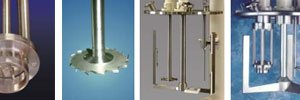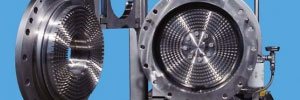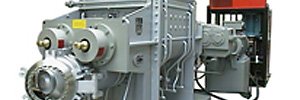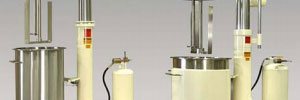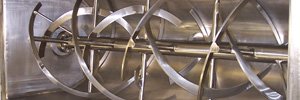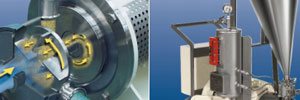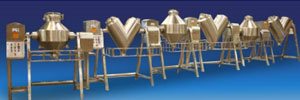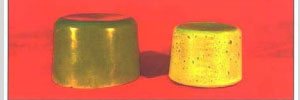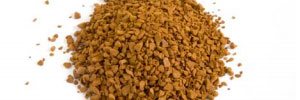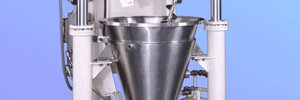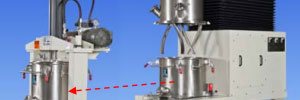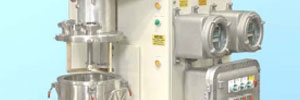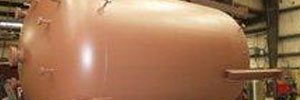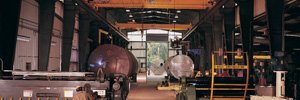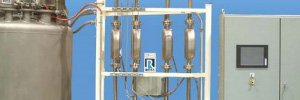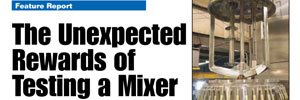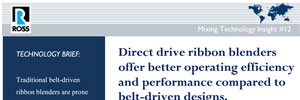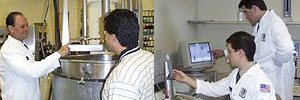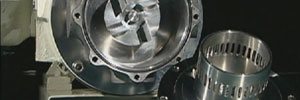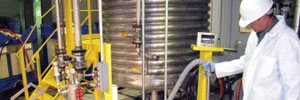Mixing Technology Insights
Mixing Technology Insights offer a brief look into ROSS' products, process expertise and market strengths. The reports delve into how the equipment can be used to improve your process and to add to your bottom line. ROSS strives to provide its customers with up to date information covering new technology in the industrial mixing and blending industry.
Select a specific product, process or market to view a list of related Insights:
Select Product
Select Process
Select Industry
- Recommended Mixing Equipment for Plastisols
Formulated for a wide variety of coating, molding and screen printing applications, plastisols are dispersions of polyvinyl chloride (PVC) resin in a liquid plasticizer. Fillers, additives and colorants are also typical components of plastisols. - Recommended Mixing Equipment for Structural Adhesives
Structural adhesives are formulated from different chemistries depending on their end use and desired performance. Base resins are typically epoxy, acrylic, polyurethane or cyanoacrylate. - Recommended Mixing Equipment for Encapsulation Materials
The majority of encapsulation materials utilized in electronic packages are highly-filled epoxy and hardener resin systems. - Recommended Mixing Equipment for Dental Composites
A typical mixing procedure starts with blending two or more monomers often of significantly different viscosities. Various particle size fillers are then added to the liquid binder and mixed under vacuum until a homogenous paste is obtained. - Maximize mixing efficiency with a Planetary Mixer.
This bulletin explores the different types of planetary-style mixers. For enhanced processing efficiency and flexibility in a multi-product mixing operation, consider the Planetary Dual Disperser which can operate as a classic Double Planetary Mixer or as a Planetary Disperser. - Tips for selecting the best planetary mixer for your process
This bulletin presents some general guidelines for selecting the most appropriate planetary mixer configuration for a particular application. - Mixing viscous suspensions
Solid-liquid suspensions are prepared in different types of mixing equipment, depending on viscosity and shear level requirements. This bulletin presents some mixer solutions for efficient and consistent dispersion of solid raw materials into a viscous liquid. - Perfect batch-to-batch
reproducibility in your mixer.
In order to produce consistently high quality mixtures, a repeatable batching and cleaning procedure must be established. But the best time to ensure batch-to-batch reproducibility is before the mixing equipment is even purchased. This bulletin outlines some useful considerations for mixer selection. - Clean design planetary mixers
Contamination in mixing systems can arise from foreign materials in the environment as well as materials within the mixer left from previous batches. In planetary mixers, a number of clean design features are available which help improve ease of cleaning and reduce contamination risks - Mixing highly filled compounds
Obtaining a good dispersion of fillers into a mixture is critical to end product quality. Highly filled, viscous compounds can be successfully prepared in multi-shaft or planetary mixers. - Scale-up of batch mixers
Successful scale-up of specialty mixing equipment often relies less on straightforward formulas and more on empirical data and experience. This bulletin discusses some practical tips and considerations useful in the scale up of batch mixing operations.. - Mixing dilatant materials
Dilatant materials pose a unique mixing challenge due to their very nature: the greater the shear forces applied to the material, the more resistance is encountered. Heavy-duty, high-torque double planetary mixers operated under comparatively low speeds are ideal for processing shear-thickening mixtures. - Mixing abrasive pastes and
slurries
Dispersion of abrasive solids into liquid can be accomplished in single-shaft, multi-shaft or planetary mixers, depending on product rheology and degree of abrasion. This bulletin discusses some strategies for combating abrasive wear in these types of mixers. - Effectively disperse fibers into your viscous mix.
Many fiber-filled composites are high viscosity formulations that require efficient dispersion in a planetary mixer configuration where a number of blade designs and combinations are available. Fiber characteristics and composite rheology are the main factors evaluated in the mixer selection process. - Hybrid planetary mixers
produce high viscosity mixtures with ultra-fine dispersion quality.
Hybrid planetary mixers are utilized for creating fine dispersions in viscous mixtures, typically within the viscosity range of 100,000 to 2 million cP. Intense mixing is applied to the product by constantly advancing a high speed disperser and a low speed stirrer into the batch. Solids are quickly incorporated into the viscous bulk material and agglomerates are dispersed regardless of product flow characteristics. Designs for multiple planetary stirrers and disperser blades are available for more demanding applications. - Consider the advantages and disadvantages of scrapers.
Consider the advantages and disadvantages of scrapers.
The use of scrapers in batch mixing operations helps improve product homogeneity and heat transfer efficiency. However, there are cases wherein scrapers are not recommended such as in the processing of abrasive applications or highly viscous, sticky materials.

